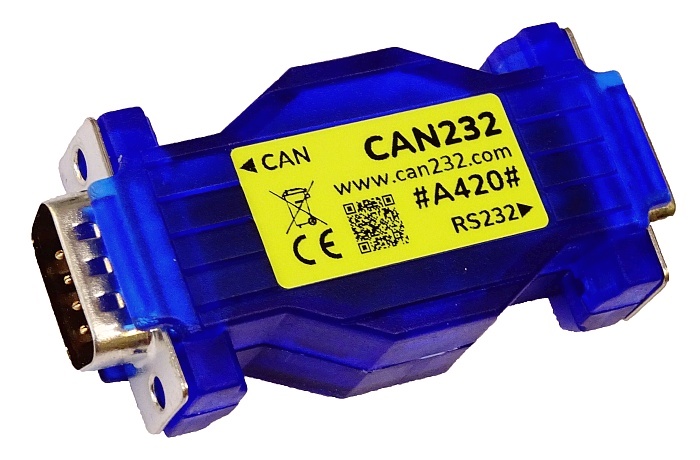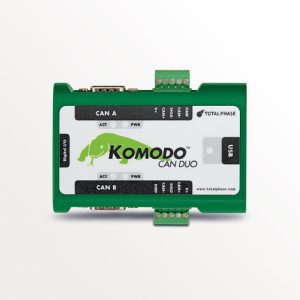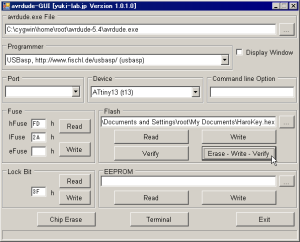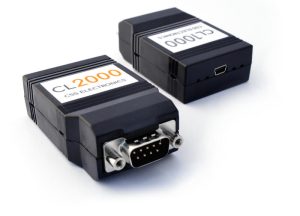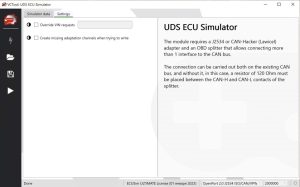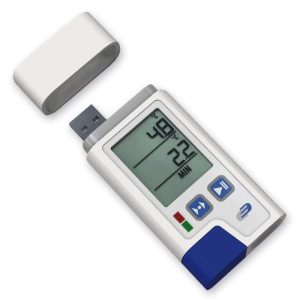CAN232 and CANUSB are two popular interfaces used in the Controller Area Network (CAN) bus system. CAN is a communication protocol used in various industries, including automotive, aerospace, and industrial automation, to transmit data between electronic devices. In this blog, we’ll discuss the basic features and functions of CAN232 and CANUSB interfaces.
CAN232 Interface: CAN232 is a serial interface that allows communication between a computer and a CAN network. It is designed and manufactured by Lawicel AB, a company based in Sweden. The interface is compatible with various operating systems such as Windows, Linux, and MacOS. It also supports standard communication protocols like ASCII, binary, and hexadecimal.
The CAN232 interface consists of two main components: a USB-to-serial converter and a CAN controller. The USB-to-serial converter is used to connect the interface to a computer, while the CAN controller is responsible for communicating with the CAN network. The interface supports CAN 2.0A and CAN 2.0B protocols and can operate at speeds up to 1Mbps.
CAN232 provides various features that make it ideal for debugging and testing CAN networks. For instance, it supports automatic baud rate detection, error detection and reporting, and bus status monitoring. Additionally, the interface supports the transmission and reception of CAN messages in different formats, such as standard and extended frames.
CANUSB Interface: CANUSB is another serial interface used for connecting a computer to a CAN network. It is manufactured by Lawicel AB and is compatible with various operating systems such as Windows, Linux, and MacOS. The interface supports both CAN 2.0A and CAN 2.0B protocols and can operate at speeds up to 1Mbps.
The CANUSB interface is a compact and cost-effective solution for connecting a computer to a CAN network. It consists of a USB-to-serial converter and a CAN controller. The USB-to-serial converter is used to connect the interface to a computer, while the CAN controller is responsible for communicating with the CAN network.
Like the CAN232 interface, the CANUSB interface also supports various communication protocols, such as ASCII, binary, and hexadecimal. It also supports automatic baud rate detection, error detection and reporting, and bus status monitoring. Additionally, the interface provides various features for transmitting and receiving CAN messages, such as the ability to filter messages based on their IDs.
Conclusion: CAN232 and CANUSB are two popular interfaces used for connecting a computer to a CAN network. Both interfaces provide various features for debugging and testing CAN networks and support different communication protocols. They are widely used in various industries, including automotive, aerospace, and industrial automation, and are compatible with various operating systems. If you’re working with a CAN network and need to connect it to a computer, either of these interfaces may be a good solution for your needs.
One of the main advantages of using these interfaces is that they allow users to connect a computer to a CAN network for the purpose of debugging and testing. For instance, when working with an automotive CAN network, these interfaces can be used to monitor the data being transmitted and received by various components in the system. This can be especially useful when diagnosing issues such as communication errors or malfunctioning components.
Another advantage of these interfaces is their ease of use. They can be connected to a computer using a USB port, which eliminates the need for additional hardware or software. Additionally, the interfaces are compatible with various operating systems, which means that they can be used with a wide range of computers.
Both CAN232 and CANUSB interfaces support different communication protocols, such as ASCII, binary, and hexadecimal. This allows users to communicate with a CAN network using the protocol that is most convenient for their specific needs. Additionally, these interfaces support automatic baud rate detection, which means that they can automatically adjust to the baud rate of the CAN network.
The CAN232 and CANUSB interfaces also provide various features for transmitting and receiving CAN messages. For instance, they support the transmission and reception of CAN messages in different formats, such as standard and extended frames. They also provide the ability to filter messages based on their IDs, which can be useful when monitoring specific components in a CAN network.
In terms of differences between the two interfaces, the main difference is their size and cost. The CANUSB interface is more compact and cost-effective than the CAN232 interface, but it provides similar functionality. Additionally, the CAN232 interface provides more advanced features, such as the ability to transmit and receive J1939 messages.
Overall, both CAN232 and CANUSB interfaces are useful tools for connecting a computer to a CAN network for the purpose of debugging and testing. They provide various features and support different communication protocols, which make them versatile and easy to use.
Advantages of CAN232 and CANUSB interfaces:
- Easy to use: Both interfaces can be connected to a computer using a USB port, which makes them easy to use and eliminates the need for additional hardware or software.
- Compatible with various operating systems: These interfaces are compatible with various operating systems such as Windows, Linux, and MacOS, which means that they can be used with a wide range of computers.
- Supports multiple communication protocols: CAN232 and CANUSB interfaces support different communication protocols such as ASCII, binary, and hexadecimal, which allow users to communicate with a CAN network using the protocol that is most convenient for their specific needs.
- Automatic baud rate detection: Both interfaces support automatic baud rate detection, which means that they can automatically adjust to the baud rate of the CAN network.
- Provides advanced features: CAN232 provides advanced features such as the ability to transmit and receive J1939 messages.
Disadvantages of CAN232 and CANUSB interfaces:
- Limited bandwidth: CAN networks have limited bandwidth and can only transmit a certain amount of data at a time. This can cause delays and slow down communication between the computer and the CAN network.
- Requires technical knowledge: To use these interfaces, users need to have some technical knowledge of CAN networks and communication protocols.
- Limited range: These interfaces have a limited range and can only communicate with devices within a certain distance.
- Expensive: The CAN232 interface is more expensive than the CANUSB interface, which may make it less accessible to some users.
- Limited functionality: These interfaces are primarily used for debugging and testing, and may not provide the same level of functionality as dedicated CAN controllers or other specialized hardware.
Overall, CAN232 and CANUSB interfaces are useful tools for connecting a computer to a CAN network for the purpose of debugging and testing. They provide various features and support different communication protocols, which make them versatile and easy to use. However, they may have some limitations and may not be suitable for all applications.

